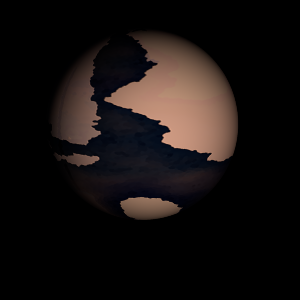|
|
Space Astro
|
Info for exoplanet "Pesu"
| Scientific (actual) data |
|---|
| Name | Kepler-563 b |
| Planet status | Confirmed |
| Radius | 0.276 |
| Orbital period | 22.1843 |
| Discovered | 2016 |
| Updated | 2021-02-05 |
| Tconj | 2455010 |
| Publication | Announced on a website |
| Detection type | Primary Transit |
| Alternate names | 2MASS J19294710+4617231 b, K00468.01, KIC 9589524 b, KOI-468 b, KOI-468.01, WISE J192947.08+461723.1 b |
| Star name | Kepler-563 |
| Right ascension | 292.45° |
| Declination | 46.29° |
| Mag j | 13.358 |
| Mag h | 12.831 |
| Mag k | 12.773 |
| Star distance | 557 |
| Star metallicity | -0.08 |
| Star mass | 0.8 |
| Star radius | 0.77 |
| Star age | 5.37 |
| Star temperature | 5066 |
| Star alternate names | 2MASS J19294710+4617231, KIC 9589524, KOI-468, WISE J192947.08+461723.1 |
| Wikipedia article | Kepler-563 b |
Back
| |
| Fictional info (?) |
|---|
| Suggested name | Pesu |
| Planet type | Cold planet |
| The polar regions are constantly below 126°K (-147°C).
The volume of water detected has been estimated to be equivalent to the volume of water in the Black Sea. |
| Atmosphere | 2H2O | 99% |
| Atmospheric pressure | 90 bar |
 |
| No known satellites |
| Google search for Pesu |
|
Website by Joachim Michaelis
|
|
|
|